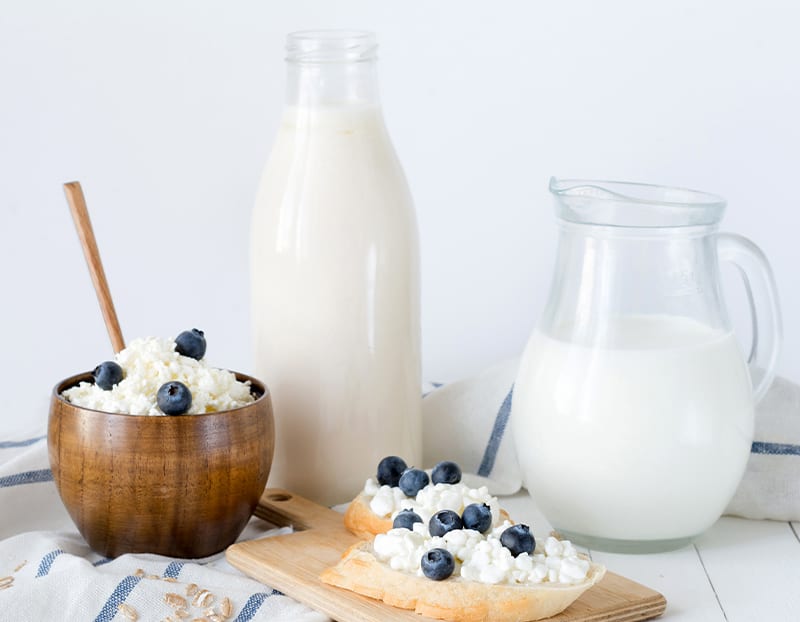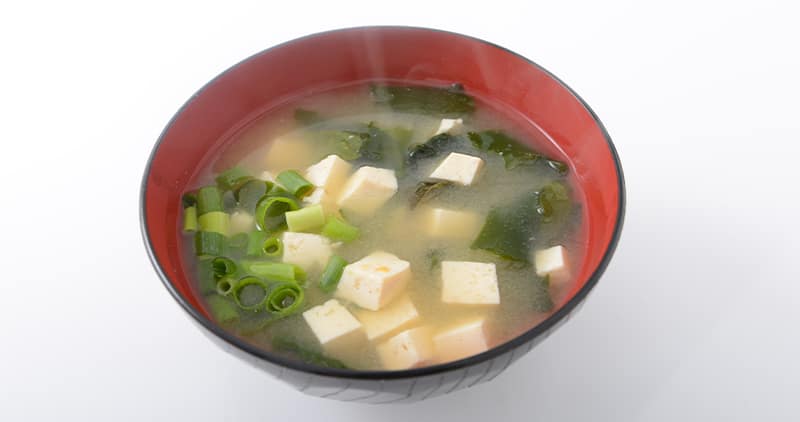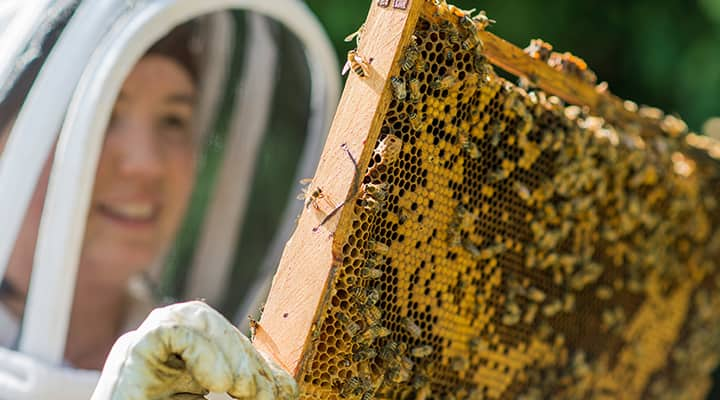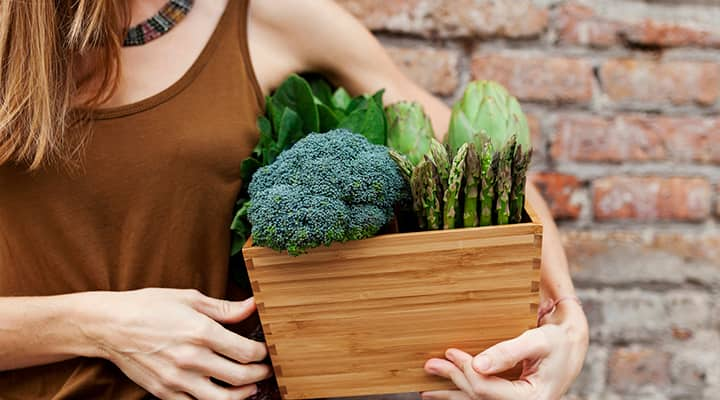
Are You Eating These Top Probiotic Foods?
Published: May 2020
Probiotics are living microorganisms, such as bacteria, that can promote health when they are ingested. So you may be wondering, which foods have probiotics? Am I getting enough from my diet?
Some of the best probiotic food sources are foods that are fermented, although not all fermented foods contain live, active cultures of the beneficial bacteria known as probiotics. Fermentation is a chemical reaction between the naturally occurring sugar and bacteria. However, further processing, such as pasteurization—which is intended to kill pathogens—can limit how many probiotics survive and make it onto your plate.
Here are the foods that have the most probiotics.
Foods High in Probiotics

The best dairy sources of probiotics
If you love dairy, we have good news for you: a number of the most popular probiotic-rich foods are milk byproducts. Here are the best sources:
- Yogurt
- Kefir
- Cheese (including cottage, mozzarella, and cheddar)
Does all yogurt contain probiotics? No. Check if the label of these dairy products indicate that live and active cultures are present. Notably, kefir is generally higher in probiotics than yogurt.
Vegetables that contain probiotics
In case you needed yet another reason to pile your plate with veggies, it turns out that the fermentation process involved in preserving vegetables can offer your body a healthy dose of probiotics. Some of the most popular picks include:
- Sauerkraut
- Kimchi
- Pickles (from cucumbers—but not the kind pickled in vinegar! Look for the words “naturally fermented” on the label.)
Getting probiotics from legumes

If you’ve explored Asian cuisine or popular vegan dishes, both of which often feature fermented legumes, you’ve likely helped yourself to some of the most delicious probiotics out there. Fermented soybeans in particular are a great source.
- Miso
- Natto
- Tempeh
Kombucha, which is fermented tea, deserves an honorable mention but does not quite make the list yet, because even though it does have some probiotic content, more research is needed to verify the benefits of this popular drink.
Prebiotic-rich foods
If you’re eating with gut health in mind, don’t forget prebiotics! Simply put, prebiotics are the food for the probiotics—which, like all living things, require fuel to thrive and do their job.

So how should we nourish those live, beneficial bacteria? Some common food sources of prebiotics include the fibers of the allium family vegetables like garlic, onion and leeks. Grains such as barley, oats and wheat bran are also a good source of prebiotic fibers.
Can you get the probiotics you need from food?
The short answer is no, probably not.
While it is actually somewhat easier to get enough prebiotics from food if you eat plenty of fruit, vegetables and whole grains, it is not as easy to get enough probiotics from food alone. There are a few reasons for this.
- It’s hard to tell how much bacteria is in food
One reason is that the amount of beneficial bacteria is not usually quantified on a food label. In other words, it’s not apparent how many probiotics you are getting from a given food, nor will it be easy to figure out which specific strains it contains. Research has shown that different strains of probiotics support different areas of our health beyond gut health. This is especially important if you are looking to probiotics to address a specific health concern versus just wanting general support.

Probiotics are measured in colony forming units (CFU), or bacterial colonies, which indicates viability or strength. So for instance, if you eat a serving of yogurt, you won’t necessarily know how many billion CFUs you are ingesting. This is important because when it comes to getting the results we are looking for, we need to be able to take an amount that has found to be beneficial in clinical studies.
- Many food labels don’t share which species of probiotics are included
Sometimes food labels (especially dairy) indicate which types of probiotics it contains, but not always. It is important to know which genus, species and strain you are receiving. If one specific strain of a probiotic supports your immune system, that doesn’t necessarily mean that another strain would have the same effect. Taking a research-based probiotic will ensure you are receiving strains that have been shown to be effective.
If you do want to get an idea of the species of probiotics from a given food without a label telling you – we’ve got you covered! Check out Table 1. Examples of microorganisms commonly used in food fermentation from our Maintaining a Healthy Microbiome health protocol.
- Probiotics in food may not survive stomach acids
Even if a food contains a beneficial amount of probiotics, some strains of probiotics may not survive our stomach acid. Taking a well formulated probiotic strain will ensure the probiotics do not get destroyed before they exert their beneficial effects.
Why you should eat probiotic-rich foods and add probiotic strains
Just because you don’t know exactly what kind and how many probiotics are in food doesn’t mean you shouldn’t make every effort to include nutritious pre- and probiotic containing foods in your diet! But, to ensure you are getting enough of these nutrients, choose a probiotic that offers a variety of strains to cover your bases. Once you have your foundational probiotic, you can choose others that hone in on specific areas of health such as our oral, mental and heart health.
References
- Corcoran, B.M. et al. "Survival of Probiotic Lactobacilli in Acidic Environments Is Enhanced in the Presence of Metabolizable Sugars." Appl Environ Microbiol. US National Library of Medicine, National Institutes of Health, June 2005, https://www.ncbi.nlm.nih.gov/pmc/articles/PMC1151822/.
- Jayabalan, Rasu et al. "A Review on Kombucha Tea— Microbiology, Composition, Fermentation, Beneficial Effects, Toxicity, and Tea Fungus." Comprehensive Reviews in Food Science and Food Safety. Wiley Online Library, June 2014, https://onlinelibrary.wiley.com/doi/full/10.1111/1541-4337.12073.
- Richards, Lousia. "Kefir or yogurt: Which is better?" Medical News Today, February 2020, https://www.medicalnewstoday.com/articles/kefir-vs-yogurt.
- Şanlier, Nevin et al. "Health benefits of fermented foods." Crit Rev Food Sci Nutr. National Library of Medicine, National Center for Biotechnology Information, October 2017, https://pubmed.ncbi.nlm.nih.gov/28945458/.
- Zhang, ShanTing et al. "Whole soybean as probiotic lactic acid bacteria carrier food in solid-state fermentation." Food Control. ScienceDirect, July 2014, https://www.sciencedirect.com/science/article/abs/pii/S0956713513006671.



